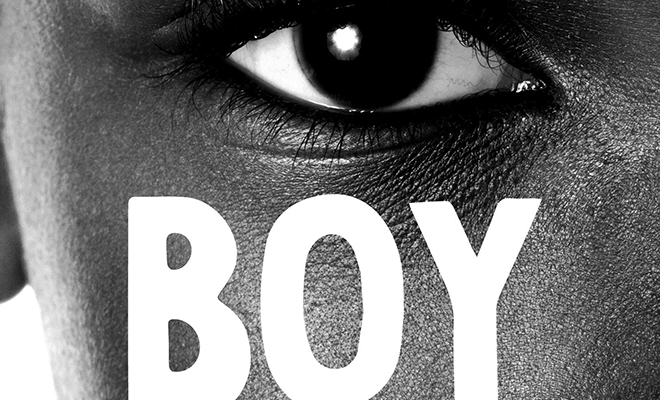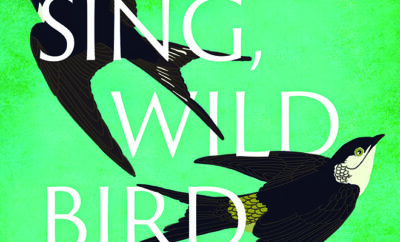
New Boy by Tracy Chevalier
Tracy Chevalier is the best-selling author of Girl With a Pearl Earring, The Lady and the Unicorn, and six other eminently readable novels. She lives in London with her husband and son.
The universe is contained in a single day in the early 1970s at a suburban Washington, D.C., elementary school. Although the primary actors are 11 years old, their behavior and motives are surprisingly adult.
“Dee noticed him before anyone else…It made her feel special to have him to herself, before the world around them skipped a beat and did not recover for the rest of the day.” Thus Tracy Chevalier begins to flesh out the characters in New Boy, a brief novel rife with emotion and arresting with its casual and explicit racism.
Dee lines up behind “him,” Osei, to begin the school day. A woman, clearly his mother, is standing outside the chain-link fence surrounding the playground. “My mother thinks that I do not know how to be the new boy,” he says in the formal English learned in his home of Accra, Ghana. Osei, a diplomat’s son whose name means “noble,” has in fact learned well how to negotiate the changing environments in which he is perceived as “other;” this is his fourth school in six years.
Mimi is Dee’s best friend. They’re not in the same class this year, and their interactions have been limited to the complex world of the playground. Mimi is a sensitive girl who’s beginning to have migraines; she’s known as the best Double Dutch turner in the school.
Ian relishes his dominion of his territory, the playground. He’s not a particularly good student or athlete; simply, he’s an accomplished, experienced bully. “Ian was the shrewdest. The most calculating. The quickest to respond to a new situation and turn it to his advantage.” Before the first bell rings, Ian is determined to manipulate the developing relationships among his friend, Rod, and Osei, Dee, Mimi and Casper, the school’s most popular boy.
Through flashbacks, we learn that Mimi and Ian are boyfriend and girlfriend, in a relationship of three days that Mimi has become increasingly uncomfortable with. She has, seeing a flash of malice in Ian’s face, recognized his true nature. The sixth grade is a microcosm of society in which girls and boys “go with” each other, then break up, with myriad unwritten rules of behavior. Dee has remained uncoupled until that morning, when a light like a flaring fire passes between her and Osei.
Chevalier develops her characters as fully as she has history and art in her previous novels. Dee’s mother, tightly braiding her daughter’s long, golden hair into two tight French braids, believes girls should be held in as long as possible. Rod’s father beat him with a belt for cursing, asserting he was the only person in the home permitted to use such language. Osei’s family life is changing, as he and his older sister, Sisi, mature and navigate the social structures of London, Rome, New York City and, now, white, suburban D.C.
The sixth-grade teachers, Mr. Brabant and Miss Lode, seem to be oblivious to the subtle romancing, scheming and sharing of conversation as the day evolves through classroom time, recess, the politics of the lunchroom, afternoon recess and events unfolding on the playground after school. Clearly, some of their cluelessness is due to their efforts to maintain control in the classroom, but some is thanks to the students’ efforts to conceal their behaviors.
A pencil case, pink with raised strawberries, is central to the day’s intrigue. It was Osei’s older sister’s; his mother could not find his in the unpacked boxes, so she sent it with Osei, as he must have a pencil case. He is embarrassed by it, and Dee swaps her case for it, setting in motion the events that escalate into the novel’s conclusion.
After finishing New Boy, I dragged out a dusty tome of the complete works of William Shakespeare and refreshed my knowledge of Othello. I must confess, SparkNotes helped me understand the language, plot, characters and their motives. Othello, Desdemona, Iago, Cassio, Emilia, Roderigo, Brabanzio and Lodovicio are somewhat disguised yet recognizable. Many of the events and behaviors of New Boy are more age appropriate for 11-year-olds than for the adults in Venice, but the stirrings of sexual and emotional ardor are unmistakable.
The Hogarth Press was founded in 1917 in London by Leonard and Virginia Woolf with a mission to publish the best current writing. In 2012, New Boy’s imprint, Hogarth, was launched in London and New York to continue the tradition. Chevalier is one of today’s best-selling novelists who are retelling Shakespeare’s classic works in new ways. It’s an excellent, gripping rendition, but please read New Boy before you check SparkNotes or your old textbook. Let’s not spoil the surprises. ■







